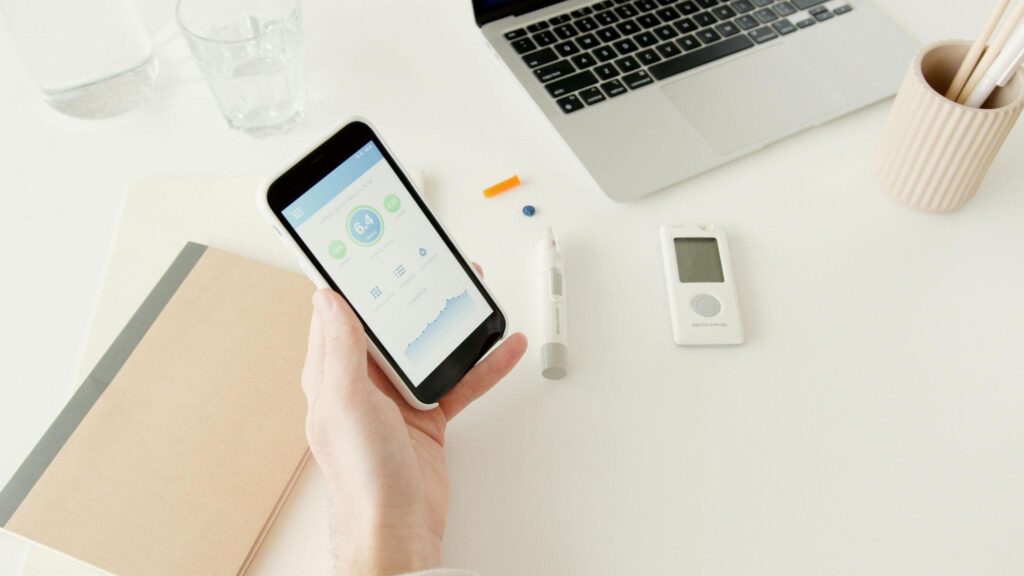Most families do not pay much attention to digital health tools until life becomes complicated. A diagnosis, long-term treatment, or even a stressful period at work can easily disrupt everyday habits. Surprisingly often, the most helpful solution is not a new pill or another appointment, but a simple phone app or an online portal. These tools do not solve all problems, but they help track appointments more effectively.
How Digital Healthcare Fits Into Everyday Life
Digital health apps didn’t become popular overnight. They quietly slipped into the background of daily life with appointment reminders, electronic test results and chat windows for follow-up questions. Most families barely noticed how natural they had become. And because people already move easily between different online spaces (reading news, planning budgets, browsing hobbies), it makes sense that healthcare has joined the same flow.
It’s even common to jump between unrelated topics while searching for something useful. Someone might read about local clinics and, in the next tab, open a casino website.
At the same time, using reviewing websites with neue Casinos https://onlinecasinopolis.de/ help compare new online casinos and their bonuses. The website allows navigating a fast-evolving digital landscape in much the same way medical apps do: by filtering information, highlighting trustworthy options and making complex choices a little easier to manage.
Keeping Medical Information in One Place

When a loved one is ill, the volume of information you receive suddenly increases very fast: test dates, medication names, questions after treatment, strange symptoms that appear and disappear. Keeping all this in a notebook or in a series of messages makes life more difficult than it has to be. Digital platforms help by bringing everything together in a single, smooth place. You don’t need to remember where you put the paper or what the doctor told you two weeks ago; everything is there, searchable, and usually time-stamped. This does not solve health problems, but it prevents you from feeling as if everything is slipping through your fingers.
According to the World Health Organization, digital health adoption accelerated largely because families needed flexible, easy-to-use systems during stressful times when traditional care became harder to access. That observation matches what many households experience directly: such tools simply reduce the mental load.
Remote Consultations Save Time and Energy
Even a doctor’s appointment can take half a day when a family has to work, go to school, and care for a patient. Telehealth visits reduce that burden. You can do them from the comfort of your kitchen table or living room and do not have to commute, find parking, or wait in crowded waiting rooms. During lunch breaks, parents can call pediatricians. Older adults do not have to travel across town just to describe their symptoms. And the conversation is often more relaxed, because no one is stressed about traffic or travel time.
In fact, stress does not disappear once an app is installed, and no platform can fully support or take care of a human being. However, when the technical part (dates, documents, numbers, notifications) is handled by technology, families gain a small but meaningful buffer between themselves and total exhaustion. Over weeks and months, that buffer can be exactly what makes the difference between living in constant crisis mode and going through a difficult time that is still, somehow, manageable.
Mental Health Apps Offer Quiet, Private Support
Hard moments rarely affect only the body. Stress accumulates silently, especially for parents and caregivers who constantly try to stay strong for others. Guided and reflective mental health apps offer small but consistent forms of support: five minutes of breathing, a space to list worries, and a gentle reminder to unwind in the evening. These little tools help you remember that life is not always as serious as it feels.
Additional ways medical apps can help
Here are more ways, how medical apps help families keep an overview, save energy for what really matters and make difficult phases a little more manageable.
- Provide clear explanations of diagnoses and test results. Short articles, glossaries or videos make complex medical terms easier to understand.
- Offer preventive checklists and risk alerts. Apps can remind users about vaccines, screenings or lifestyle risks before problems escalate.
- Integrate data from wearables. Heart rate, activity, sleep or glucose data can be collected automatically and viewed in one place.
- Support multiple users and roles. Shared access lets parents, adult children or caregivers see key information and coordinate care.
Wrapping Up
Families do not turn to digital healthcare tools because they are enthusiastic about gadgets or new apps. In practice, they start using them when things become messy and confusing, and they simply need a way to keep going. A timely alert, an overview of upcoming appointments, or a short message to a doctor can remove just enough pressure to keep the day under control. These tools can systematize the invisible workload that usually sits in someone’s head – often a parent or primary caregiver who is already overworked.
